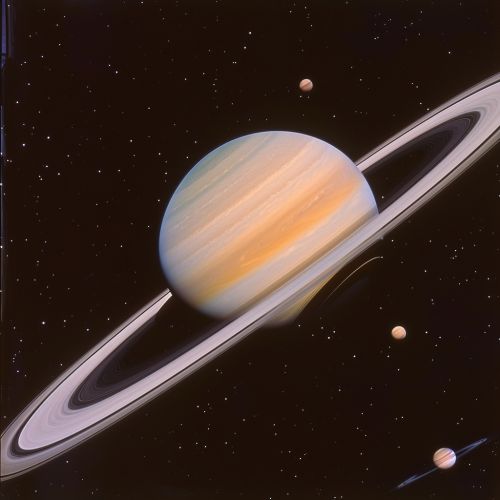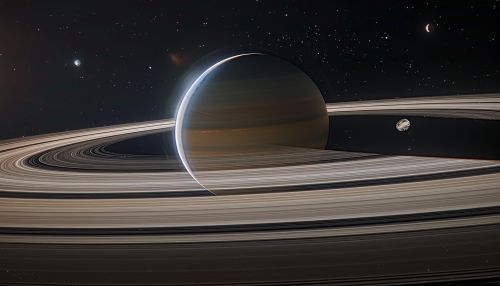Planetary Rings
Introduction
Planetary rings are a common feature of the solar system's planets, most notably Saturn's rings. These rings are composed of countless small particles, ranging in size from micrometres to metres, that orbit their parent planet. The composition of these particles can vary, but they are typically made up of ice, dust, and rock.


Formation and Composition
Planetary rings are thought to have formed from the remnants of moons, asteroids, or comets that were shattered by the planet's gravitational forces. These fragments then became trapped in the planet's orbit, creating a ring. The composition of a planetary ring can provide clues about its origin. For example, rings composed primarily of ice may have originated from a water-rich moon or comet.
Structure and Dynamics
Planetary rings are not solid structures; they are composed of countless individual particles that each orbit the planet independently. These particles interact with each other and with the planet's magnetic field, leading to complex dynamics. For example, the gaps in Saturn's rings are caused by the gravitational influence of its moons, a phenomenon known as resonance.
Observations and Exploration
Planetary rings have been observed around all of the giant planets in our solar system: Jupiter, Saturn, Uranus, and Neptune. Saturn's rings are the most extensive and visually impressive, but the rings of the other giant planets are also of great interest to scientists. Observations of these rings have been made by both ground-based telescopes and spacecraft, such as the Voyager missions and the Cassini orbiter.
Planetary Rings in the Solar System
Saturn's Rings
Saturn's rings are the most well-known and visually striking of all planetary rings. They are composed primarily of ice particles, with a smaller amount of rocky material. The rings are divided into several distinct sections, named alphabetically in the order they were discovered.
Jupiter's Rings
Jupiter's rings are much fainter than Saturn's and are composed primarily of dust. These rings are thought to be produced by dust kicked up as interplanetary meteoroids smash into Jupiter's small innermost moons.
Uranus' Rings
Uranus' rings are dark and narrow, composed primarily of ice particles and some amount of dust. Unlike the other ring systems, Uranus' rings are not named alphabetically but rather numerically, in order of their distance from the planet.
Neptune's Rings
Neptune's rings are faint and difficult to observe. They are composed primarily of dust and some larger particles. The rings are named after astronomers who made significant contributions to the study of Neptune.
